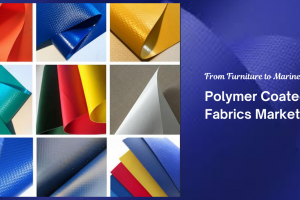Since the first approvals of chimeric antigen receptor (CAR)-T cell immunotherapies in 2017, they have showcased their potential as long-lasting treatments for cancer. This impact was felt not just in the CAR-T cell therapy space but also other forms of cancer cell therapy.
“The T-cell space has been the primary focus of interest in the cell therapy industry,” said Kai Pinkernell, chief medical officer at Glycostem. He added that prior to this point, most of the interest was in topics like regenerative medicine, but soon “CAR-T cells kicked it off for the hematology and oncology space.”
However, CAR-T cell therapies have several drawbacks. One is that they are limited in treating solid tumors and do not work well for other types of cancer. Another is that first-generation therapies are autologous: they require the extraction of the patient’s T cells, which are sent to a central facility, genetically engineered to hunt cancer, and reinfused back into the patient. This can cost precious weeks, and some die before the product arrives.
Pinkernell said that the field of cellular therapy is restricted by a lack of knowledge about what can be done with autologous cells, which is why there is a need for more research. He began his career as a physician interested in cardiovascular cell therapy, then switched focus to immuno-oncology, leading roles at Miltenyi Biotech, Medigene, and later Glycostem.
Glycostem Inc., a biotechnology company, is developing cancer cell therapies based on a type of immune cell called NK cells. These cells are our first line of defense against cells that are cancerous or infected with viruses.
Glycostem sources its NK cells from donated umbilical cord blood. This donor-based strategy, also known as allogeneic cell therapy, means that the therapy can be prepared in advance and can be used by patients more quickly than autologous CAR-T cell therapies.
“It is definitely an advantage if you can have them off-the-shelf and with T cells, you can’t really do this,” said Pinkernell. To use allogeneic T cells, for example, you need to genetically modify the cells to reduce the risk of them attacking their host—GVHD. In contrast, NK cells are naturally less likely to cause GVHD, making them easier to provide off-the-shelf.
Pinkernell said that when Glycostem was founded 15 years ago, NK cells were an unknown. “Now there’s an NK cell company opening up every day.”
NK cells are good at detecting cancer because they can detect many evolved tumors to hide common cancer signals from T cells. However, some tumors are able to evade NK cells, and the patient’s NK cells can also be caught in the crossfire when the patient receives waves of chemotherapy.
“NK cells have a half-life of about 10 to 15 days, so you’re constantly rebuilding them,” said Pinkernell. “If you get one chemotherapy after the next, your whole immune system takes a hit. So giving allogeneic NK cells to a cancer patient has some benefit.”
Glycostem’s NK cell therapy uses NK or stem cells extracted from a donor’s bloodstream or from umbilical cord blood. The therapy can be given fresh, but to be truly off-the-shelf, Glycostem aims to make NK cell therapies that can be frozen and stored: a process called cryopreservation.
Pinkernell writes that the process of freezing NK cells is more difficult than it is for T cells. Many NK cells do not survive the cryopreservation process.
“NK cells are much more susceptible to cryopreservation-induced cell death,” Pinkernell explained. “You must be really careful how you do it, and what you use as cryoprotection. It sets us apart from the field.”
Read complete article @ https://www.labiotech.eu/interview/glycostem-nk-cell-therapy/






